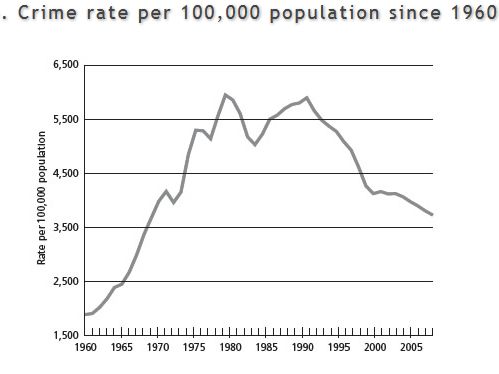It looks like you're using an Ad Blocker.
Please white-list or disable AboveTopSecret.com in your ad-blocking tool.
Thank you.
Some features of ATS will be disabled while you continue to use an ad-blocker.
13
share:
The decline in violent crime is thought to be linked to lower lead levels in the environment due to gasoline becoming unleaded..

Lead levels in select cities and crime comparisons.
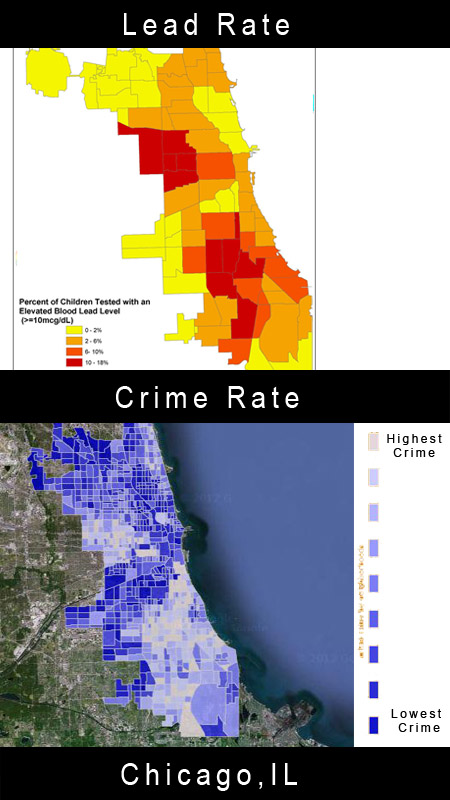
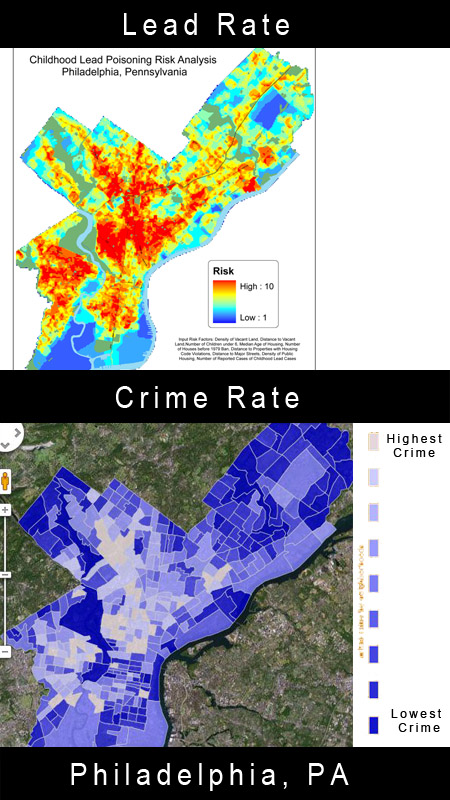
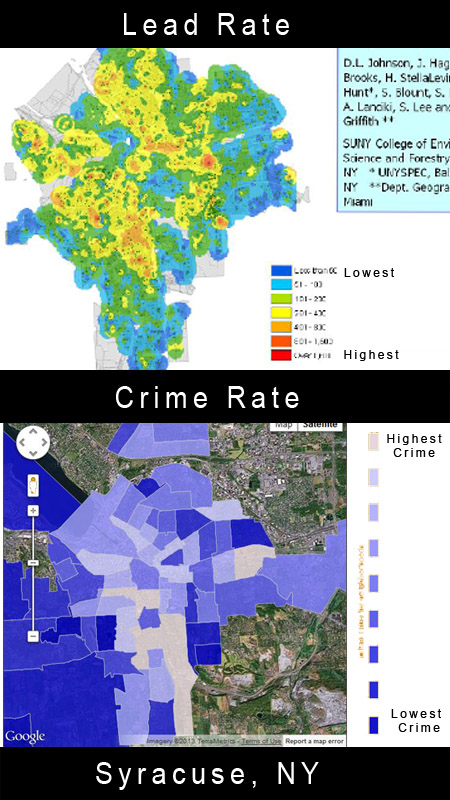
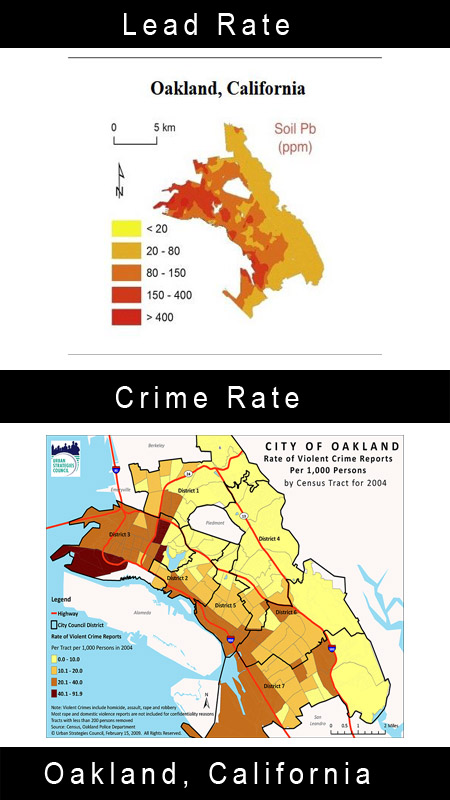
Because lead eats your brain...
The smallest amount can have an affect on your IQ

America's Real Criminal Element: Lead
FBI: Violent crime rates in the US drop, approach historic lows

Meanwhile, Nevin had kept busy as well, and in 2007 he published a new paper looking at crime trends around the world (PDF). This way, he could make sure the close match he'd found between the lead curve and the crime curve wasn't just a coincidence. Sure, maybe the real culprit in the United States was something else happening at the exact same time, but what are the odds of that same something happening at several different times in several different countries? Nevin collected lead data and crime data for Australia and found a close match. Ditto for Canada. And Great Britain and Finland and France and Italy and New Zealand and West Germany. Every time, the two curves fit each other astonishingly well. When I spoke to Nevin about this, I asked him if he had ever found a country that didn't fit the theory. No, he replied. Not one. Just this year, Tulane University researcher Howard Mielke published a paper with demographer Sammy Zahran on the correlation of lead and crime at the city level. They studied six US cities that had both good crime data and good lead data going back to the 50s, and they found a good fit in every single one. In fact, Mielke has even studied lead concentrations at the neighborhood level in New Orleans and shared his maps with the local police. "When they overlay them with crime maps," he told me, "they realize they match up."
Put all this together and you have an astonishing body of evidence. We now have studies at the international level, the national level, the state level, the city level, and even the individual level. Groups of children have been followed from the womb to adulthood, and higher childhood blood lead levels are consistently associated with higher adult arrest rates for violent crimes. All of these studies tell the same story: Gasoline lead is responsible for a good share of the rise and fall of violent crime over the past half century.
The gasoline lead story has another virtue too: It's the only hypothesis that persuasively explains both the rise of crime in the '60s and '70s and its fall beginning in the '90s. Two other theories—the baby boom demographic bulge and the drug explosion of the '60s—at least have the potential to explain both, but neither one fully fits the known data. Only gasoline lead, with its dramatic rise and fall following World War II, can explain the equally dramatic rise and fall in violent crime
Lead levels in select cities and crime comparisons.




Because lead eats your brain...
The smallest amount can have an affect on your IQ

One set of scans found that lead exposure is linked to production of the brain's white matter—primarily a substance called myelin, which forms an insulating sheath around the connections between neurons. Lead exposure degrades both the formation and structure of myelin, and when this happens, says Kim Dietrich, one of the leaders of the imaging studies, neurons are not communicating effectively. Put simply, the network connections within the brain become both slower and less coordinated.
A second study found that high exposure to lead during childhood was linked to a permanent loss of gray matter in the prefrontal cortex—a part of the brain associated with aggression control as well as what psychologists call executive functions emotional regulation, impulse control, attention, verbal reasoning, and mental flexibility. One way to understand this, says Kim Cecil, another member of the Cincinnati team, is that lead affects precisely the areas of the brain "that make us most human."
So lead is a double whammy: It impairs specific parts of the brain responsible for executive functions and it impairs the communication channels between these parts of the brain. .
America's Real Criminal Element: Lead
FBI: Violent crime rates in the US drop, approach historic lows
edit on 22-1-2013 by WaterBottle because: (no reason given)
edit on 22-1-2013 by WaterBottle because: (no reason
given)
edit on 22-1-2013 by WaterBottle because: (no reason given)
Of course the numbers line up the areas where most of the lead is.
Buildings that were built decades ago when lead paint was mostly used.
The lower numbers are in the suburbs where newer homes are.
And also where the middle class live. Middle class usually are not killin each other for 5 dollars of crack
Buildings that were built decades ago when lead paint was mostly used.
The lower numbers are in the suburbs where newer homes are.
And also where the middle class live. Middle class usually are not killin each other for 5 dollars of crack
edit on 22-1-2013 by Zaanny
because: (no reason given)
reply to post by WaterBottle
Cool thanks for posting. I am currently doing research on lead (and fluoride). I bookmarked this thread, and will come back to it soon.
Cool thanks for posting. I am currently doing research on lead (and fluoride). I bookmarked this thread, and will come back to it soon.
Cenk Uygur talks to Mother Jones reporter Kevin Drum about his investigation into the impact of lead exposure on violent crime and children’s health. Two substances were responsible for most exposure — paint with lead and leaded gasoline. “The human cost is huge,” Drum says. “You have millions of kids who were artificially turned into monsters.” As Cenk points out, it was Environmental Protection Agency regulations that helped turn that tide to a generation that has grown up nearly lead free. Drum says, “In the early ’70s, we were fighting smog. And the way to fight smog, we ended up deciding, was to put catalytic converters on cars. And to put catalytic converters on cars, you have to run unleaded gasoline. So we were kind of forced to take the lead out. The EPA was quite active in getting lead out of gasoline faster.”
current.com...
I wish they had the whole interview up.
reply to post by Zaanny
Crack wasn't introduced into middle class neighborhoods. They are also much happier, less stressed, than poor people living in the inner city.
I do think the crack boom (thanks to the CIA) had a huge part to do with the rise in crime, as well with lead. As it says in the article the crack epidemic can't explain all the data.
And also where the middle class live. Middle class usually are not killin each other for 5 dollars of crack
Crack wasn't introduced into middle class neighborhoods. They are also much happier, less stressed, than poor people living in the inner city.
I do think the crack boom (thanks to the CIA) had a huge part to do with the rise in crime, as well with lead. As it says in the article the crack epidemic can't explain all the data.
]The gasoline lead story has another virtue too: It's the only hypothesis that persuasively explains both the rise of crime in the '60s and '70s and its fall beginning in the '90s. Two other theories—the baby boom demographic bulge and the drug explosion of the '60s—at least have the potential to explain both, but neither one fully fits the known data. Only gasoline lead, with its dramatic rise and fall following World War II, can explain the equally dramatic rise and fall in violent crime
edit on 8-2-2013 by WaterBottle because: (no
reason given)
THANK YOU!!!!! I'm an environmental consultant that deal primarily with lead based paint. Exposures to lead based paint has been associated with
aggressive behaviors, ADHD, and lower IQ to name a few adverse health effects even at low levels of exposure (3 ug/dl or greater). The CDC just
lowered the level of concern for lead in blood levels to 5 ug/dl. It's a very real thing. Unfortunately, I see it a lot in my line of business.
By the way, our fine governerment (US), did us a disservice by calling it lead paint. It can occur in any number of coated surfaces (primers, stains, varnishes) as well as in our water supply (lead mains, plumbing & solder).
By the way, our fine governerment (US), did us a disservice by calling it lead paint. It can occur in any number of coated surfaces (primers, stains, varnishes) as well as in our water supply (lead mains, plumbing & solder).
reply to post by bigfatfurrytexan
sorry folks. I hit "reply" on accident. THen when i tried to edit my post to add content, ATS went down for the rest of the day.
I am going to have to take awhile to take the numbers in. BUt it looks like a definitie correlation.
I wonder what this study can tell us about Rome, who was well known to lead poison themselves by drinking lead tainted water.
sorry folks. I hit "reply" on accident. THen when i tried to edit my post to add content, ATS went down for the rest of the day.
I am going to have to take awhile to take the numbers in. BUt it looks like a definitie correlation.
I wonder what this study can tell us about Rome, who was well known to lead poison themselves by drinking lead tainted water.
reply to post by WaterBottle
Actually, it correlates much better with Roe V, Wade.
Unwanted children become unwanted adults.
Actually, it correlates much better with Roe V, Wade.
Unwanted children become unwanted adults.
new topics
-
Ed Dowd some good news
Medical Issues & Conspiracies: 7 hours ago -
Anyone like the Scorpions?
Music: 7 hours ago -
What if this is true?
2024 Elections: 8 hours ago -
Merry-Go-Round Ride
Short Stories: 10 hours ago
top topics
-
A fix for the Trans players in sports
Social Issues and Civil Unrest: 17 hours ago, 16 flags -
What if this is true?
2024 Elections: 8 hours ago, 13 flags -
Man Stabbed or Cardiac arrest on Westminster Bridge, London, UK
Mainstream News: 15 hours ago, 7 flags -
It's toast
General Chit Chat: 14 hours ago, 7 flags -
Ed Dowd some good news
Medical Issues & Conspiracies: 7 hours ago, 6 flags -
Merry-Go-Round Ride
Short Stories: 10 hours ago, 5 flags -
Anyone like the Scorpions?
Music: 7 hours ago, 3 flags
active topics
-
Ed Dowd some good news
Medical Issues & Conspiracies • 6 • : annonentity -
It's toast
General Chit Chat • 10 • : Station27 -
President-Elect DONALD TRUMP's 2nd-Term Administration Takes Shape.
Political Ideology • 244 • : WeMustCare -
Ok this is some BS now WTH
Rant • 18 • : VariedcodeSole -
Post A Funny (T&C Friendly) Pic Part IV: The LOL awakens!
General Chit Chat • 7822 • : KrustyKrab -
Anyone like the Scorpions?
Music • 4 • : KrustyKrab -
-@TH3WH17ERABB17- -Q- ---TIME TO SHOW THE WORLD--- -Part- --44--
Dissecting Disinformation • 3372 • : WeMustCare -
International Criminal Court Issues Arrest Warrant For Netanyahu
Mainstream News • 49 • : Degradation33 -
France gives Ukraine license to fire long-range missiles at Russia
World War Three • 41 • : Connector -
What if this is true?
2024 Elections • 25 • : BernnieJGato
13

